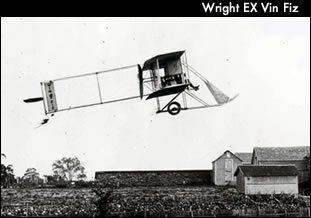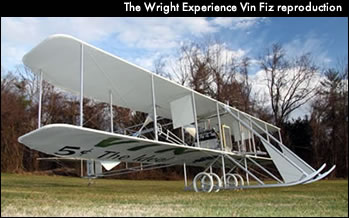Highlights of the Wright Experience The Wright Brothers’ design process was evolutionary. Each aircraft’s design was developed from the previous one, starting with the 1899 kite. In a similar way, although not strictly chronological, the Wright Experience™ is in the process of building all Wrights’ machines from the 1899 kite through the Model B, the brothers’ first production aircraft. This timeline shows the major flying machines built by Orville and Wilbur Wright and the progression of the models built by the Wright Experience™.
1899 Kite:
The first aircraft to employ wing warping. The Wright Experience™ reconstructed a replica of the 1899. It was constructed in Virginia and flown at Kitty Hawk, North Carolina, in October 1997. Our kite’s performance matched the written descriptions of Wilbur Wright’s tests.
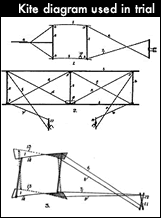
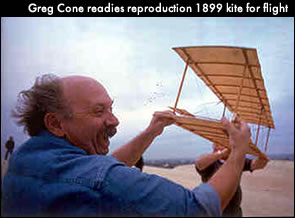
1900 Kite/Glider:
The performance of the 1900 glider was not what the brothers had expected — it was capable of lifting only 75 pounds. One of our reproductions was tested at Kitty Hawk, the other is on display at the National Air and Space Museum in Washington, D. C.
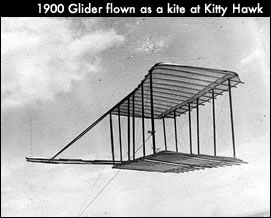
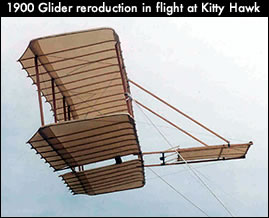
1901 Glider:
Modified after its disappointing first trials with the addition of a third spar and trussed ribs, this machine gave Wilbur Wright glides of more than 300 feet. Our reproduction glider was built with the Wrights’ modifications and wind-tunnel tested in 2001. It is on display at the College Park (MD) Aviation Museum.
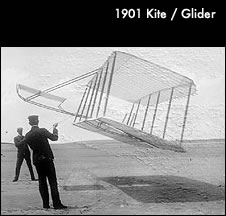
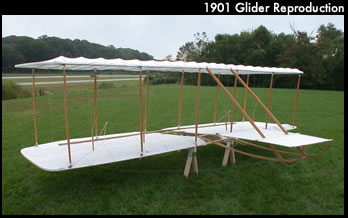
1902 Glider:
This reproduction aircraft was tested at the NASA/Langley Full Scale Wind Tunnel in 2002. It was flown on the Outer Banks of North Carolina in 2002 and 2003 as part of pilot training for the 1903 flyer.

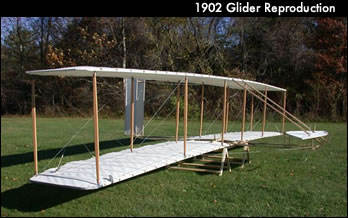
1903 Flyer:
The design of the 1903 flyer was a confident extension of the 1902 glider. Its assembly in Kitty Hawk was a frustrating trial. Its success in December 1903 was both monumental and momentary. It is now restored and on display at the National Air and Science Museum, Washington DC.
Our reproduction of the 1903 flyer was built and unveiled for the Experimental Aircraft Association’s Countdown to Kitty Hawk Celebrations, sponsored by Ford Motor Company, Microsoft Flight Simulator and Eclipse Aviation. This is the first fully authentic 1903 flyer built since the original machine. It completed a full suite of wind-tunnel tests, was flown in November and December 2003, and was featured in centennial celebrations December 17, 2003, at Kitty Hawk, NC. A second flyer was built for the National Park Service and sponsored by Harry Combs, and a third Flyer was built for the Seattle Museum of Flight.
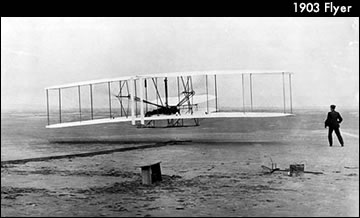
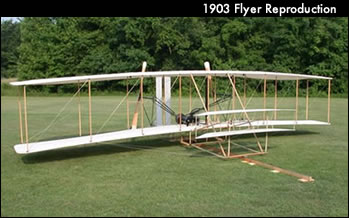
1904 “Huffman Prairie” Flyer:
The aircraft built by the Wrights following the successful flights in 1903 was the first Wright plane to fly in a complete circle. Our reproduction efforts are in the research stage.
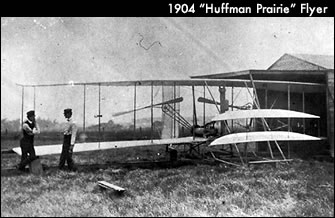
1905 “Dayton” Flyer:
This aircraft is rightly known as the world’s first practical aircraft. This was the first plane to make long distance flights and led to the Wright Military Flyers. Our reproduction efforts are in the research stage.
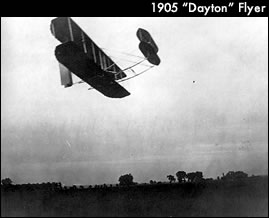
1908 Model A:
The plane used by Orville and Wilbur in their first public flights in Europe and the United States. Our reproduction made its public debut in the National Memorial Day Parade on May 26, 2008, on Constitution Avenue in Washington DC.
Next it was on display at Fort Myer for public celebrations commemorating the Centennial of Orville Wright’s inaugural flights in 1908. After that it went to the National Air and Space Museum’s Steven F. Udvar-Hazy Center near Dulles International Airport as an interactive educational exhibit for a year.
Our reproduction is destined for display at the National Museum of the United States Army at Fort Belvoir, Virginia.
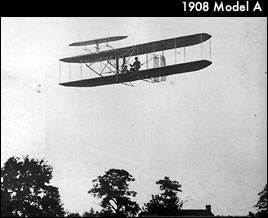
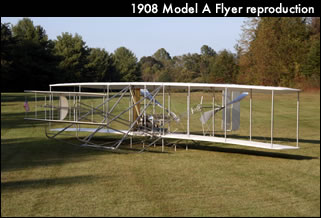
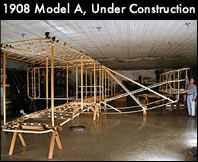
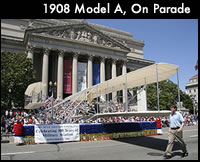
1909 Military Flyer:
The aircraft purchased by the governments of the United States, France, Italy and Germany. Built in 2008, our reproduction is to be displayed at the College Park (MD) Aviation Museum.
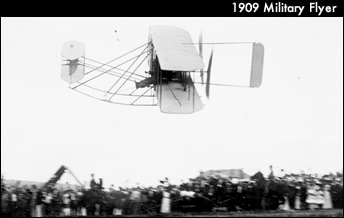
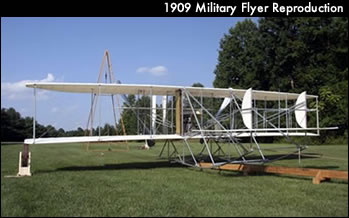
1910 Transitional Model A/B:
The aircraft Orville Wright took to Montgomery, Alabama, in the late winter of 1910 to use as a trainer in the first U.S. civilian flying school. Later it was flown by the Wright exhibition team across the United States. Our reproduction was built in 2010 and is on temporary display at the Wright Experience™ hangar in Warrenton, Virginia.
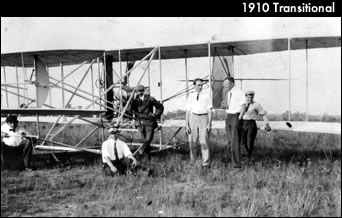
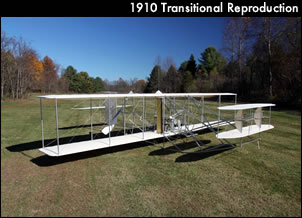
1910 Model R: Nicknamed the “Baby Grand”, it had a one of a kind V-8 engine and precariously small wings, and for a brief time was the fastest airplane in the world. Built for the 1910 air races at Belmont Park in New York, the Model R was destroyed in a crash before the big race. Soon after, the Wrights decided to quit the racing business, and the engineering mastery behind the airplane has never been appreciated. The Wright Experience™ is recreating the engine and has researched the rest of the aircraft for eventual display.
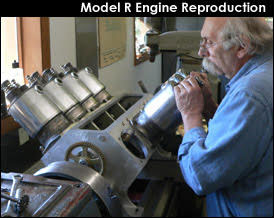
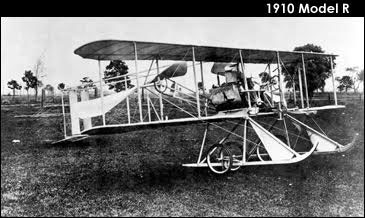
1911 Glider:
The last glider built by the Wrights as well as the last aircraft they flew at Kitty Hawk, North Carolina. Orville set soaring records in this glider that stood for decades. We completed our reproduction in 2011.
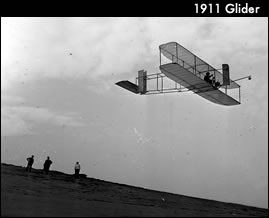
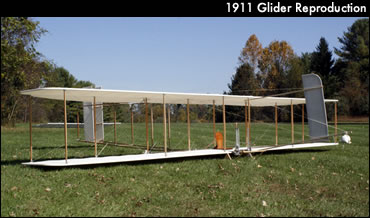
1911 Model B:
The Wrights’ most popular aircraft, this was our first reproduction and we built several of this particular model. The first was built in 1992 for the Fort Rucker Army Aviation Museum, Fort Rucker, Alabama. One is now on display at the NASM’s Udvar-Hazy Center near Dulles International Airport. A static model was built in 1997 for display in the College Park Aviation Museum, College Park, Maryland. A flyable reproduction, generously supported by Northrop Grumman and Curtiss Wright, was featured in the PBS NOVA film “Wright Brothers’ Flying Machine,” originally aired Nov 11, 2003.
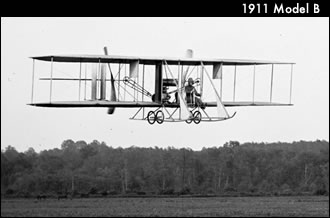
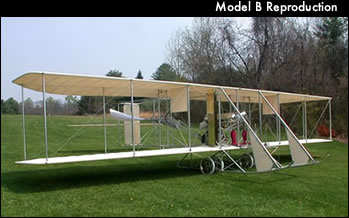
1911 Wright EX “Vin Fiz”:
The first airplane to fly across the United States, piloted by Calbraith Perry Rodgers and sponsored by a grape soda manufacturer — Vin Fiz. Our reproduction was built in 2011 and is on temporary display at the Wright Experience™ hangar in Warrenton, Virginia.
